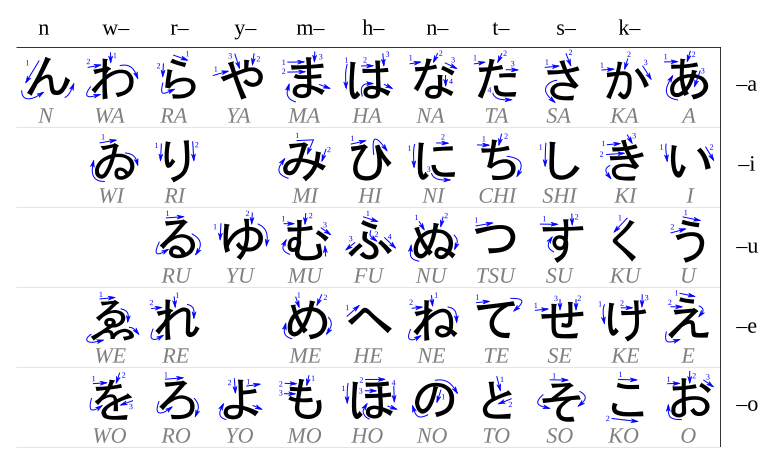In this segment I will divulge upon you some things that I have learned about the Japanese language -- basically short little lessons from one student to another. I might try to make these posts a regular thing.
Now, I am in the Navy, and being in the Navy means that I go out to sea quite a lot. One usually does not have a whole lot of privacy on the ship, and there are not really any places to sit down and quietly study, so I usually end up studying my Japanese in an open lounge where any passerby can see what I am doing. Now, very few people study Japanese in the Navy (the people that I have met have all either been stationed in Japan for a long period of time, have a Japanese wife, or in many cases both), so it naturally piques the interest of the casual pedestrian walking through the ship's corridors when they see me studying. I usually get a variety of responses from the ignorant "How do I say this (insert bit of American slang) in Japanese)?" to legitimate interest in studying the Japanese language. I am going to cater to those who actually want to dive into learning Japanese.
Learning Japanese is just like anything else -- it may seem difficult to get into, but if you take it milestone by milestone anyone can learn. The biggest obstacle I think most people have is getting started, especially if you are forced to study on your own due to lack of other options. The first skill any Japanese language student needs to acquire in order to be successful is mastering ひらがな (hiragana) and カタカナ (katakana).
 | |||||
| ひらがな (Hiragana) Chart -- Start here. |
Written Japanese consists of 3 different writing systems. The characters that most people are familiar with is kanji. Kanji「漢字」are characters imported from the Chinese language, and they represent actual words and ideas. They are those tatoos you see people get because they "look cool", even though some of the time they have no idea what it means. You will need to learn kanji at some point, but don't worry about it in the very beginning.
The other 2 writing systems are completely phonetic. ひらがな is used in Japanese words, and any kanji can be expressed in ひらがな. カタカナ is used in words originating from foreign countries (such as any of the many English words incorporated into the Japanese language, like ハンバーガー), or for placing emphasis on words normally written in ひらがな. If you learned your ABC's as a child, you can learn ひらがな and カタカナ. It's only 46 characters. I posted a ひらがな reference chart above that teaches you how to write each character. The best way to learn is to practice reading, writing, and sounding the characters out.
 |
| 美文字トレーニングDS -- Great for writing practice |
For reading, the best way to familiarize yourself with hiragana at first is using flash cards. Just get a stack of index cards, write the hiragana on one side and the romanization on the other, and practice. Repetition is the key here. You can also practice using online flash cards at this website. When you feel comfortable reading individual characters, try reading ひらがな at a few Japanese ひらがな-only websites (I have a few links at the end of the post).
Here is a video that has the ひらがな song. This will help you remember the ひらがな and how to pronounce each character. If you scroll over each character at this website it will sound out the character for you, as well. Practice pronouncing the character when you use your flash cards.
Well, that is a wrap for today's Japanese lesson. One last thing I would like to mention for iPhone users -- you can get an app that allows you to practice reading, writing, and pronouncing ひらがな and カタカナ called Kana Complete. It's pretty cheap (only $3) and portable, so you can practice wherever you go. Remember, perseverance is the key to accomplishing anything that is challenging -- がんばって!(Don't give up!)
As promised, here are some links to ひらがな-only websites that I found (if you google ひらがなだけ or やさしいにほんご you may be able to find a few more). They are actually pretty hard to find.
An old blog written in all ひらがな
こどものページ (Children's Page) - The red pencil in the upper right toggles between ひらがな and kanji
Another children's website in only ひらがな
Another blog with mostly ひらがな entries
A children's language school in Tokyo has a section in all ひらがな describing their programs.
Rikaichan, an indispensable Firefox plugin. Scroll over any kanji to get its reading and English definition!

No comments:
Post a Comment